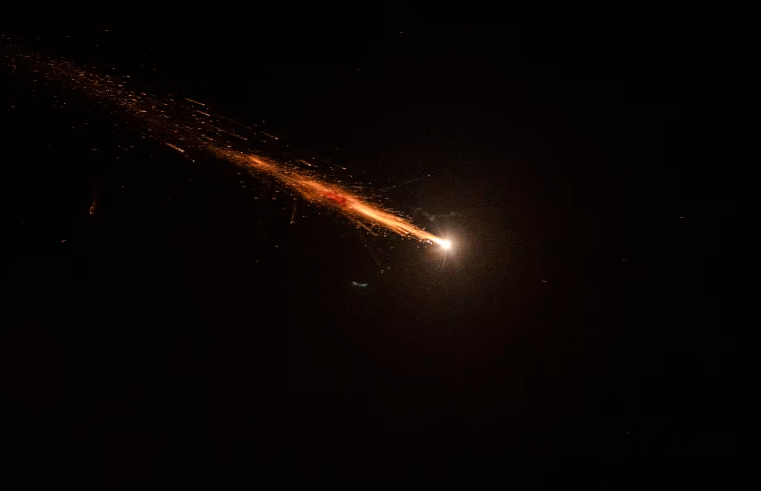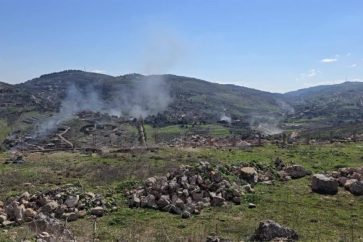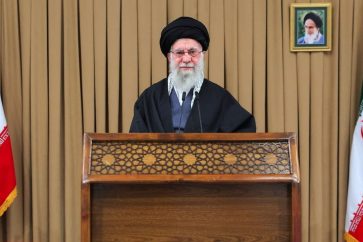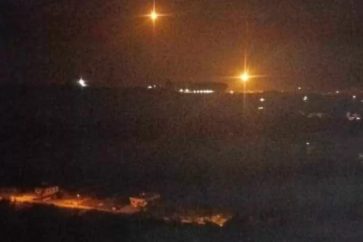Iran’s barrage of ballistic missiles this week appears to have overwhelmed Israel’s air defenses in some places, The Wall Street Journal quoted independent researchers who examined emerging satellite imagery as saying.
The assessment means that any new Iranian strikes against Israel, if launched, could have much more serious consequences if they target civilian infrastructure or heavily populated residential areas,the US paper reported .
“That is an important consideration as Israel contemplates its military response. Tehran has threatened strikes on Israeli power plants and oil refineries if Israel hits Iranian territory in a counterattack expected in the coming days.”
“Unlike April 13, when Iran fired a large number of slower cruise missiles and drones, Tuesday’s barrage was made up exclusively of some 180 much faster ballistic missiles, one of the largest such strikes in the history of warfare. Analysts say that most of these projectiles were Iran’s most modern ballistic missiles, the Fattah-1 and Kheibar Shekan.”
“The faster the missile, the harder it is to intercept it, that’s simple physics,” said Ulrich Kühn, head of research for arms control at the Institute for Peace Research and Security Policy in Hamburg, Germany. “It’s certainly much harder to defend against ballistic missiles, and even more so if there is a bulk of them coming in on a certain target, because then you have the ability to overwhelm the antimissile defenses—which is exactly what happened in Israel.”
Satellite images of a target on Tuesday—the Nevatim air base in southern ‘Israel’, home to its F-35 jet fighters—show that as many as 32 Iranian missiles managed to land within the base’s perimeter, according to analysis by professor Jeffrey Lewis, at the Middlebury Institute for International Studies in Monterey, Calif.
“Thirty-two missiles is a lot of missiles,” Lewis said. “We have exaggerated ideas about the effectiveness of air defenses. We have this pop-culture idea that missile defenses are much more effective or available than they actually are.”
“While Israel operates the sophisticated Arrow 2 and Arrow 3 missile-defense systems, co-produced with the U.S., the interceptors are limited in quantity and more expensive than the incoming Iranian missiles, Lewis said. It often takes multiple interceptors to try stopping one ballistic target.”
It is more complicated to inflict damage on a sprawling and hardened air base in the middle of the desert than to strike infrastructure sites in heavily populated areas, WSJ noted.
“The Israelis would care more about defending Tel Aviv” than defending Nevatim, said Lewis. “On the other hand, they would ultimately have the same problem there—Iranians could at the end of the day overwhelm the system.”
The Islamic Revolution Guards Corps carried out a missile strike against the Israeli occupation entity on Tuesday evening.
The IRGC said in a statement that it has targeted “the heart of the occupied territories” in response to the martyrdom of Hamas political bureau chief Ismail Haniyeh, Hezbollah Secretary General Sayyed Hasan Nasrallah, and IRGC general Abbas Nilforoushan at the hands of the Zionist regime.
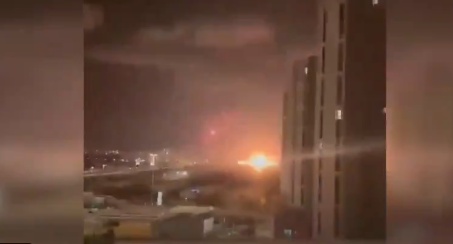
Source: The Wall Street Journal

